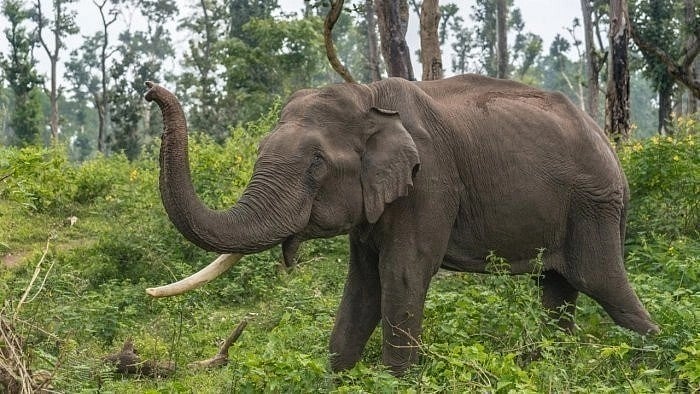
Representative image showing an elephant.
Credit: iStock Photo
Hubballi: Karnataka and Kerala, which are home to around 40% of wild elephants in India, have fared better in preventing human casualties from jumbo attacks compared to other states with large elephant populations.
In the last five years, Karnataka witnessed 160 deaths due to elephant attacks, while Kerala lost 102 human lives. The two states together have 11,755 out of the 29,964 wild jumbos in the country as per the 2017 Elephant census.
When standardised, every 100 elephants killed 2.6 humans in Karnataka; in Kerala the figure was 1.78. The country's average is 9.44 human deaths per 100 elephants.
Experts point out habitat consolidation and connectivity along with use of technology as reasons for lower human deaths in the two states, while fragmentation and dispersion of elephants to newer territories in other states is resulting in increased human deaths.
The Ministry of Environment, Forest and Climate Change had stated that between 2019 and 2024, wild elephants killed 2,829 humans. In the same period, the country lost 528 elephants due to unnatural reasons including electrocution, run over by trains, poisoning and others.
In the last five years, Odisha, which has 1,976 elephants, saw the highest human deaths of 624, followed by Jharkhand (679 elephants; 474 human deaths), West Bengal (194; 436), Assam (5,719; 383), Chhattisgarh (247; 303) and Tamil Nadu (2,761; 256).
According to multiple government documents analysed by DH, West Bengal has the highest human mortality from elephants (every 100 elephants are killing 224.74 humans), this is followed by Chhattisgarh (122.67) and Maharashtra (133.33).
Anand Kumar, a scientist at the Nature Conservation Foundation (NCF), says that most human deaths caused by elephants occur due to accidental encounters, which means there is a potential to prevent these fatalities.
He suggests that in addition to using technology, effective tracking of elephants, developing strong communication strategies among stakeholders about elephant locations and collaborative implementation of safety measures at homes and workplaces can help reduce human deaths resulting from interactions with elephants. Kumar emphasises that raising awareness among plantation workers, providing them with sanitation facilities at home, relocating workforces away from areas with high elephant presence and studying elephant behaviour can significantly reduce human-elephant conflicts.
He suggests three key principles — planning, protection and precaution — for ensuring the coexistence of humans and elephants. This approach has been successfully implemented for over 22 years in Valparai, Tamil Nadu, where the average number of human fatalities has been less than one per year (2003-2024), including no deaths reported during a three-and-a-half-year period from 2021 to 2024.
Anand emphasises that each habitat has its own unique challenges, highlighting the importance of a scientific approach to minimise tragedies for both humans and elephants.
Raman Sukumar, former chairman of the Karnataka Elephant Task Force, attributes lesser human casualties in south India, especially Kerala and Karnataka, to habitat consolidation and connectivity in the region. "In states such as West Bengal, Chhattisgarh, Odisha and Jharkhand the human deaths are high due to fragmentation of habitat, range expansion and dispersing of elephants to newer habitats," he says.
Manoj Rajan, Additional Principal Chief Conservator of Forests (Project Elephant), says Karnataka has been successful in minimising human deaths due to elephants through implementation of several proactive measures such as elephant trench proof, railway barricade, solar electric fencing and regular patrolling to prevent human deaths.